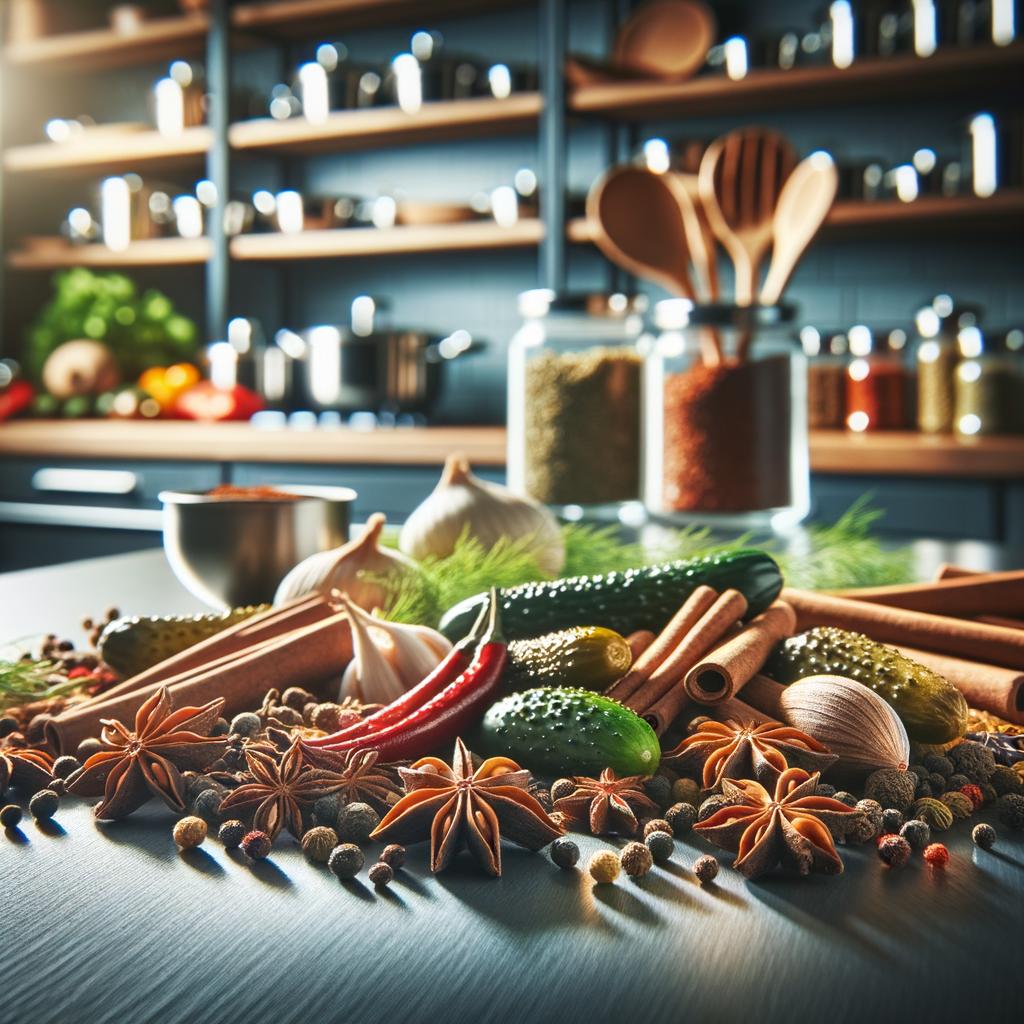Pickling Spices

Description
Pickling spices, a harmonious blend of various aromatic herbs and spices, are the unsung heroes of the culinary world. They are a symphony of flavors, color, and aroma, each ingredient contributing to a unique sensory experience. The blend typically includes mustard seeds, allspice, coriander, cloves, ginger, red pepper flakes, and bay leaves, though the composition can vary based on regional preferences and individual recipes. It's a vibrant mix of colors, from the golden mustard seeds to the deep red pepper flakes, creating a feast for the eyes. The texture is crunchy and coarse, providing a satisfying bite when used in dishes. The flavor profile is a roller-coaster ride, starting with the pungency of mustard, the sweet warmth of allspice, the citrusy undertone of coriander, the spicy kick of the red pepper flakes, and the earthy depth of bay leaves. It's this unique combination that sets pickling spices apart from other spice blends.
Primary Uses
Pickling spices are primarily used to flavor and preserve various foods, especially vegetables and fruits, through the process of pickling. They are a key component in a wide array of cuisines, from the dill pickles of North America to the tangy achars of India. Apart from pickling, these spices are also used to season slow-cooked dishes like stews and braises, enhancing the flavor profile of the dish. In non-culinary uses, pickling spices are sometimes used in homemade remedies for their antimicrobial properties.
History
The history of pickling spices is as rich and varied as the spices themselves. Pickling, as a method of preserving food, dates back to ancient times, and the spices used have evolved over centuries. Each spice has its own romantic history and cultural significance. For instance, mustard seeds were considered a symbol of faith in ancient Greece, while cloves were highly prized in the Middle Ages and were part of the lucrative spice trade. The use of pickling spices has evolved over time, with new combinations and uses being discovered, yet their core purpose of enhancing flavor and preserving food remains unchanged. There are countless folklores and myths associated with these spices, like the belief in medieval Europe that cloves could ward off the plague.
Nutritional Information
Pickling spices are not just flavor enhancers but also nutritional powerhouses. They are rich in antioxidants, vitamins, and minerals. Mustard seeds are a good source of selenium and magnesium, while allspice is packed with vitamin C and iron. Coriander seeds are known for their high fiber content and potential digestive benefits, and cloves are renowned for their antimicrobial properties. Compared to similar spice blends, pickling spices have a wider range of nutrients due to the variety of components. However, as with all foods, moderation is key to reaping the health benefits without overdoing it.

